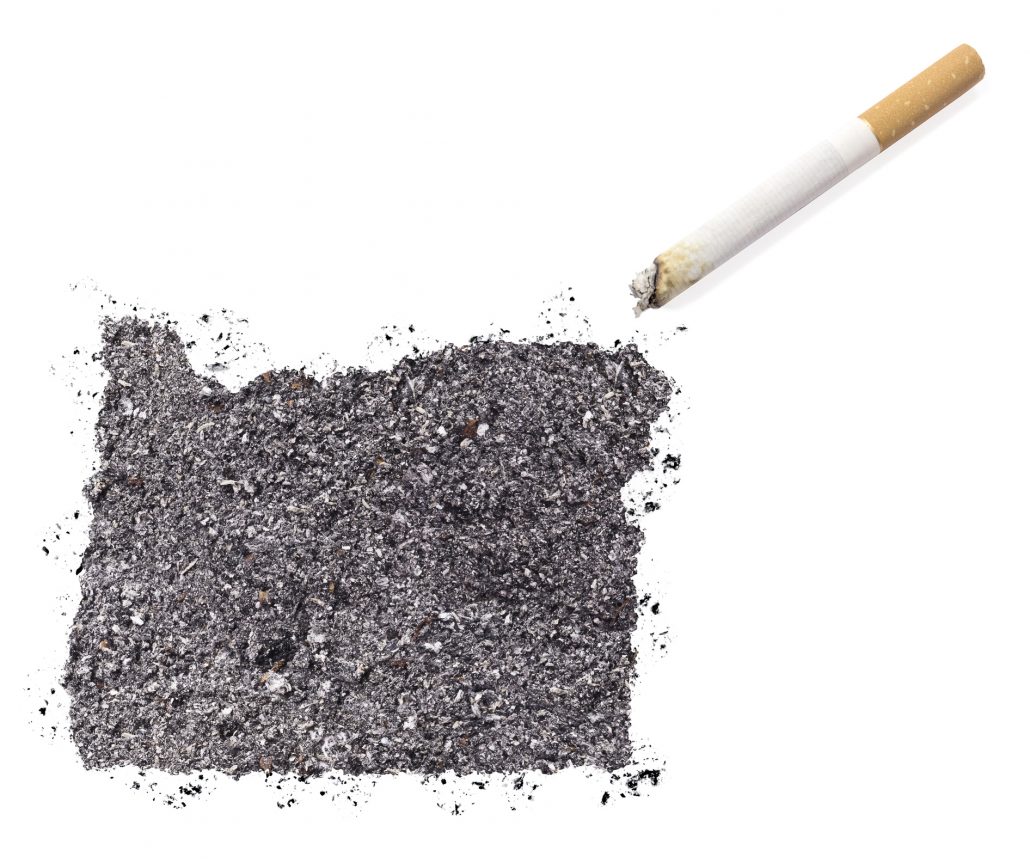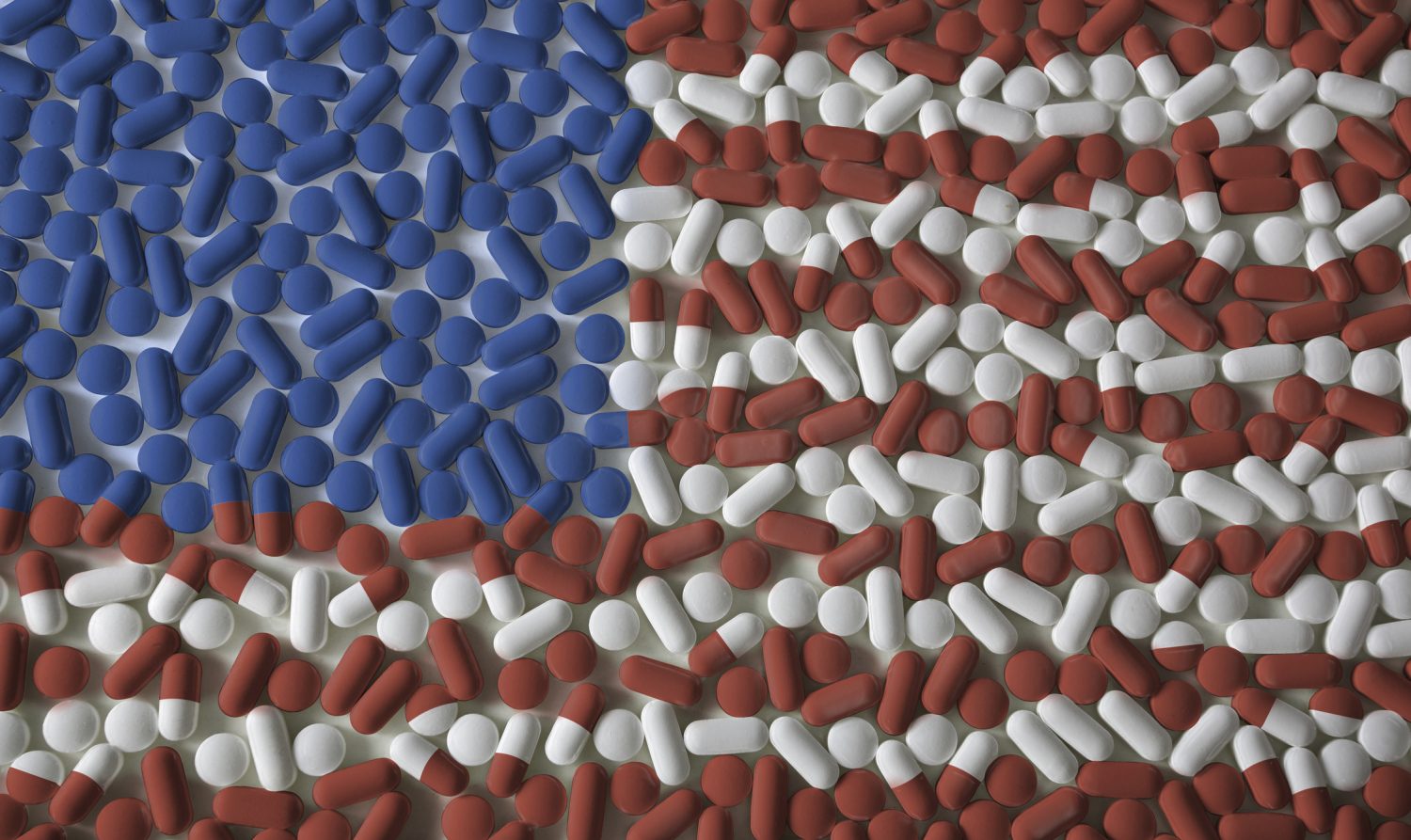by Sher Delva | Aug 11, 2017 | Addiction, Anxiety Disorder, Therapy, Withdrawal

It’s official.
Oregon just became the 5th state to raise its smoking age to 21. Oregon will now join California, New Jersey, Hawaii, and Maine as states where a person must be at least 21 to purchase tobacco products.
Gov. Kate Brown signed the bill on Wednesday, and it will take effect at the start of 2018. The bill will bar anyone under the age of 21 from purchasing tobacco products.
The empirical research shows the change could save lives. Prior to this, Brown praised Lane County in Oregon for raising its legal age, arguing it was a necessary move to reduce smoking rates.
“I want to make sure that we continue to reduce the number of young people starting to smoke, but it’s also critical that we reduce the number of people smoking,” she said in May.
In short, these new bills are a popular strategy to address the high death rates from smoking. While smoking rates have actually declined in the past several years, tobacco products still kill far more than all other drug-related deaths, murders and car crashes combined. Policymakers believe these new bills will decrease the amount of deaths that occur every year due to tobacco
The Stats & The Controversy:
Tobacco kills over 480,000 people in the US every year. A 2015 report from the Institute of Medicine (IOM) found that raising the smoking age to 21 could prevent approximate 223,000 premature deaths among Americans born between 2000 and 2019.
Still, some remain skeptical. Many argue that since 18-year-olds can serve in the military, get married and enter into legal contracts, they should be able to choose whether or not to smoke. Furthermore, there are concerns about how these policies are going to be enforced and the overall cost for taxpayers.
However, Beverly May, a regional director for the Campaign for Tobacco-Free Kids supports the bill. She believes it is another step in changing social norms and reducing the amount of youth who smoke.
“This is just another tool of a comprehensive approach to working with youth … It’s not just (raising the legal age to) 21. I think there’s been a lot of emphasis on law enforcement, but this is something we want to do for changing the social norms. It’s working with communities and convenience stores so they don’t sell the cigarettes,” May said.
Changes in smoking regulations are always shocking at first, May explains. At one time, smoking was common in airports, public restaurants, bars and other indoor locations. However, nowadays seeing someone smoke indoors would be incredibly uncommon.
“Now what happens is that if you walk into a restaurant and someone sees another person smoking, usually a patron will tell them to quit smoking or will tell the management. So a lot of these laws are policing themselves,” May continued.
Young People Are More Likely to Become Regular Smokers
Furthermore, older people are less likely to become smokers in comparison to younger people, the study notes. About 90 percent of adults who are daily smokers started smoking before 19 years old. Almost 100 percent report their first use before age 26, according to the IOM report. Therefore, preventing people from smoking at a young age could prevent them from smoking for a life time.
The higher legal age would delay the initiation rate in several ways:
- It would prevent 18- to 21-year-olds from legally purchasing cigarettes.
- It would have a trickle-down effect by making it more difficult for 15-17-year-old to access cigarettes from friends and family.
- Middle and high-school students are more likely to have peers around 18-19 than peers closer to 21, making it more difficult to regularly obtain cigarettes illegally.
These new bills are modeled after The National Minimum Drinking Act of 1984 which rose the legal drinking age from 18 to 21.While many argue that the drinking age should be lowered, a 2014 review in the Journal of Studies on Alcohol and Drugs found that evidence strongly suggested that the increasing drinking age has, in fact, reduced the amount of underage drinkers.
The review discovered that the minimum 21-year old drinking age saves hundreds of lives annually when you look at reduced alcohol-related traffic fatalities among underage drivers. One study found that the number of fatally injured drivers with a positive blood alcohol concentration decreased by 57 percent among those ages 16 to 20.
New Zealand, which reduced its drinking age from 20 to 18 in 1999, saw increases in drinking among ages 18 to 19. There was an even bigger increase among those 16 to 17 years old, as well as a rise in alcohol-related crashes among 15- to 19-year-olds.
Still, critics commonly argue that these age increases force youth to drink in secret, which increases binge drinking. However, there has not been any research that confirms this.
What do you think about increasing the age to use tobacco products? Either way, it seems like this is becoming a trend. There are officially five states that have enacted this type of bill. Smoking may seem harmless, but it is clear the consequences can be deadly overtime. If you are struggling with mental illness or substance abuse, please do not wait to seek help. Call now.
CALL NOW 1-888-922-5398
by Sher Delva | Aug 11, 2017 | Addiction, Addiction Stigma, Celebrity, Stigma, Therapy, Withdrawal

Not long ago, we wrote an article regarding WWE Hall of Fame wrestler Kurt Angle and his journey to sobriety. Now, Kurt Angle is thrilled to announce that he has achieved four years of sobriety!
On Sunday evening, the wrestler posted a black and white meme of Mickey Mouse flipping the bird that said, “To all the people who said I couldn’t stay sober this long…”
He continued his words with a more serious tone:
“Yesterday was my 4th year anniversary of remaining sober. I’m very humbled by my progress and support. Had to post this, because there’s very little humor in recovery.” Angle continued, “So I’m going to enjoy this. Hope you all do too! “Here’s to 4 years bitches!!!!” #stayingsober #doingitformyfamily #itstrue.”
The 48-year-old has been vocal about his addiction and recovery from prescription painkiller addiction. Angle was first introduced to painkillers in 2003 after sustaining a neck injury. He felt pressured to conceal his injury to continue working, so he opted for painkillers to alleviate the pain.
“I remember taking that first pill, and I was like, ‘well, this makes me feel really good. I feel like I can take on the world and I can’t feel my neck.’ And the affect it had on me gave me more energy than I normally had, so I liked that feeling. So I tried that. One turned to two. Two turned to four. Four turned to eight. And before I knew it, I was out of control,” he said in an interview.
In order to conceal his drug use, Angle would hold off on taking narcotic pain medication during the evening. Right when the night time hit, he would abuse painkillers, alcohol, and anti-anxiety medication. At one point, Angle says he was ingesting 65 painkillers a day. He managed to rack up four DUIs over a six-year period.
At times, he was able to withdraw from opioids on his own, but eventually the desire to use caught up with him.
Looking back, Angle admits: “When you’re that deep into that stuff – you can’t do it on your own.”
In August of 2013, Angle finally reached his breaking point. After his fourth DUI in Wise County, Texas, he decided to enter rehab and has been sober since.
Since entering recovery, Angle has returned to the WWE as a general manager and has launched an app and website to help those in recovery.
“I’m traveling all the time for work, and I’m a husband and father to five kids, so I just don’t have time for AA meetings,” he said. “I could go to a counselor or a psychiatrist, but that’s pricey and still just one day a week. Where was I going to get this structure now?”
Because of these concerns, Angle developed a space that would help give people in recovery a sense of accountability and structure. The site and app, AngleStrong, offers users support, structure, positive affirmations, goals and reminders to help with their sobriety. The site offers tools that help address all aspects of recovery.
Angle stressed how crucial it was for him to maintain a conversational about addiction.
“What keeps me clean is talking about my addiction. I do it daily, whether it’s in the form of talking to a group, an interview or a video chat. And at the same time, I’m giving back.”
We commend Kurt Angle for his efforts in not only staying sober but helping others struggling in their journey as well. It is so important to offer a helping hand to those in the early stages of sobriety. The first year of recovery is challenging and a completely new experience. It is important to create a network of people who will keep you accountable during this period of time.
Addiction is a disease and recovery is the only way to manage and take back control fully. If you are struggling with mental illness or substance abuse, please do not wait to seek help. At one point, Angle felt completely out of control, but recovery gave his life back. You can regain yours too. Call now.
CALL NOW 1-888-922-5398
by staff | Aug 7, 2017 | Addiction Treatment, Detox, Drug Abuse, Recovery, Withdrawal

(This content is being used for illustrative purposes only; any person depicted in the content is a model)
Repeated and extended use of most drugs can cause physical dependence to develop quickly in the body, and while many people experience symptoms of dependence differently, once it has been established there are typically a number of uncomfortable or even painful adverse effects. Many of these side-effects, specifically withdrawal symptoms, happen when trying to discontinue use of the substance. Many refer to this period of getting off of drugs as the detox stage. Detoxing from some substances can be harder on the body than others, while some can actually become life-threatening. When attempting to get off of drugs one of the most commonly asked questions is- how long does it take to detox your body from drugs?
There is no one-size-fits-all answer to this question. Withdrawal symptoms can appear quicker and last longer, depending on the individual and the factors of their drug use.
How Long Does it Take to Detox Your Body from Drugs: Questions to Ask
Because not everyone is exactly the same, their body will react differently based on their own personal health and their own habits. Typically an individual will experience the most serious withdrawal symptoms in the first two weeks of detox, but there are so many things that contribute to how this experience will affect you.
Here are a few questions you may want to ask:
-
What is the drug?
Different drugs will have different detox periods because of how long they stay in the system.
-
How much do you usually take?
For those who take larger amounts, they increase the chances of the body building up more of a tolerance to the drug.
-
How often do you use the drug?
Someone taking a drug multiple times a day every day has a better chance of developing a stronger dependence quicker than someone who uses once every couple of days.
-
What is your metabolism like?
Of course something that impacts how long a drug stays in your body is your metabolism. The quicker your body burns through fat, nutrients and other resources the quicker the residual deposits of the drug in the body will dissipate.
-
Are you generally healthy?
Those who not only take care of themselves, but are healthier in general may have an easier detox experience than those who are already not healthy and more often ill. For each individual there are a number of personal health that impact how long a drug stays in the system, including:
- Height
- Weight
- Age
- Genetics
- Gender
- Body fat
- Health of the liver
- Kidney health
- Hydration
Many key organs are involved in the metabolism or elimination of many of the drugs you take, such as digestive organs, respiratory organs, liver and kidneys. Some studies have made rough estimate of how long withdrawals may last for certain substances. However one cannot guarantee a general timeline can tell how long detox will take accurately considering each individual’s own health and habits can make these timelines vary.
How Long Does it Take to Detox Your Body from Drugs: PAWS
Sometimes people don’t expect to experience withdrawals after a certain point because they think the body has already overcome its dependence, however there are other effects of drugs that can be a challenge.
Post-Acute Withdrawal Syndrome (or Protracted Withdrawal Syndrome) is often referred to as PAWS. This the second stage of withdrawal. PAWS causes recovering addicts and alcoholics to feel some symptoms of withdrawal long after the initial withdrawal phase is over. So you may have fewer physical symptoms, but there are much more emotional and psychological symptoms that can continue to bother you.
PAWS occurs because your brain chemistry is gradually returning to normal. As your brain heals without constant use of potent drugs, the levels of brain chemicals fluctuate as they approach the new equilibrium.
Common Post-Acute Withdrawal Symptoms include:
- Mood swings
- Anxiety
- Irritability
- Variable energy
- Low enthusiasm
- Variable concentration
- Disturbed sleep
PAWS can often mimic depression, and increases the risk of relapse. So while the body may start to feel more refreshed and the aches and pains of physical dependence may be getting better, the brain is still struggling.
How Long Does it Take to Detox Your Body from Drugs: Why Medical Detox Matters
Some people may ask how long does it take to detox your body from drugs because they want to try and detox at home. This may seem like a more convenient approach, but it is definitely not the safest or most effective way. Medical detox matters because it is not so simple to predict how long someone will experience withdrawals.
Because some may experience detoxing from drugs differently, having an experienced medical staff, along with addiction specialists creates a safer and more effective environment to detox. Medical detox provides a safe and secure space to get through this beginning difficult stage of recovery, while offering quality care and assistance to each individual and their needs.
The Palm Healthcare Company detox facility has a 24-hour medical and addiction professional staff to continuously evaluate individual progress and provide comprehensive support during this process. Our highly qualified specialists genuinely strive to make recovery possible for everyone who needs help. If your or someone you love is struggling with substance abuse or addiction, please call toll-free.
CALL NOW 1-888-922-5398
by Sher Delva | Aug 4, 2017 | Addiction, Celebrity, Drug Abuse, Mental Health, Stigma, Therapy

Any James Franco Fans Out There?
James Franco recently opened up about what he calls his “addictive personality.” It turns out the actor/director has struggled with workaholism and mental health his entire life.
Franco is known for his eclectic resume, starring in films such as Milk, Spiderman, Spring Breakers and City by the Sea. He has appeared in television shows like Freaks and Geeks and General Hospital.
The interview, with Out magazine, was to promote his upcoming HBO series, The Deuce. Franco chatted with novelist Edmund White about some of the challenges he faced, and how he managed to overcome them.
Teenage Angst
Franco’s troubles start way back in his teen years. During this period, he was arrested for underage drinking, graffiti, and shoplifting, among other things. Reflecting on that time, Franco told the Guardian, “It was teen angst. I was uncomfortable in my own skin. I was shy.”
Franco found acting as a way to cope and passionately immersed himself in it. He found acting to be an excellent outlet for his personality type. However, soon acting “became everything” to the point where he did not even socialize.
After doing nothing but working, Franco says he realized he was depressed, isolated and lonely.
“I really threw myself into it, and that became everything, to the point where I didn’t even socialize. And then after, like, 10 years of that, at age 27, I realized, ‘Man, I’m so depressed. On the surface my life seems pretty good—I have a career and everything—but I feel isolated and lonely,’” he admits
To combat these feelings, he decided to switch gears and go to school at Brooklyn College. However, just like with acting, academics became the focus of all his attention, and he was obsessive with that as well.
“I threw myself into school, but again it was just this sort of running, running, running,” he says.
Franco told Out that it has been difficult to overcome his workaholism. One of the ways Franco has found helps is through participating in activities like surfing and taking classes at the International Dance Academy on Hollywood Boulevard.
He says these activities are part of his “therapy,” to help him overcome his work addiction.
“It’s a kind of therapy for me,” he said. “I’ve started a new chapter of my life. I was very work-addicted and addicted to other things—not substances, I got over that a long time ago—but I’ve recently changed my life, and this is part of my therapy.”
—
What is a Workaholic?
The concept of workaholism or workaholic behavior is very misunderstood. Often, people see these behaviors as positive qualities. You might even hear people joke about how they are a workaholic as a way of describing their passion for their job and solid work ethic.
The truth is workaholism is a real condition that can severely impact a person’s life. People addicted to work sacrifice their social life, families, and personal connections due to their obsessive desire to work.
But what’s the difference between a hard worker and a workaholic?
This is a very common question. A hard worker is someone who works very hard while at work and completes all of their tasks, yet still manages to find a healthy balance between work and personal responsibility. Of course, the occasional burst of overworking may occur to meet important deadlines however, this is not the norm.
Workaholics, on the other hand, are unable to make this differentiation. They view work as a source of adrenaline. They feel they must work harder than everyone else and put in more hours in order to succeed.
Workaholics achieve one goal and immediately set more ambitious ones. Staying at the same level of accomplishment is a failure and results in incredible distress. Workaholics sacrifice their health, family, and personal life in order to work.
Overall, workaholism is something rarely addressed, but like Franco, people who struggle with workaholism often need professional help. If you are struggling with workaholism, mental illness, or substance abuse, please reach out. You are not alone. Call now.
CALL NOW 1-888-922-5398
by Justin Mckibben | Aug 2, 2017 | Addiction, Drug Abuse, Heroin, Opana, Opioids, Prescription Drugs

America knows all too well the devastation of opioid addiction. With an overdose outbreak that has been progressively damaging and related death rates becoming increasingly alarming, we have reached new depths of drug-induced desperation. Therefore, the news from the Commission on Combating Drug Addiction and the Opioid Crisis is not all that shocking. The panel charged with examining the nation’s opioid epidemic is now urging the President to declare a national public health emergency to combat the ongoing crisis.
When we look at the history of American presidents announcing a ‘state of emergency’ it typically has to do with national security, foreign policy and war, or natural disasters and viral illness. So, to put the issue of addiction up next to these drastic calls to action might just bring a new level of intensity to battling opioid addiction in America.
American overdose deaths involving opioids have quadrupled since 1999. From 2000 to 2015, more than 500,000 people died of drug overdoses. The majority of these overdose deaths have opioids involved.
In America, drug overdoses now kill more people than gun homicides and car crashes combined.
Opioid Commission Calls for Action
The Republican New Jersey Governor Chris Christie was enlisted as the chair of the opioid commission back in March. The opioid commission also includes:
- Democrat Governor Roy Cooper of North Carolina
- Former Democratic Representative Patrick Kennedy of Rhode Island
- Republican Governor Charlie Baker of Massachusetts
At the time the commission was created Chris Christie said the idea behind the administration’s new approach to fighting addiction would focus a lot on assisting the Center for Disease Control and Prevention (CDC). This week the opioid commission’s statement calling for the President’s immediate action states:
“Our citizens are dying. We must act boldly to stop it. The first and most urgent recommendation of this Commission is direct and completely within your control. Declare a national emergency.”
While insisting that the administration put forth an emergency declaration, the specially appointed opioid commission said that Trump is the-
“-only person who can bring this type of intensity to the emergency and we believe you have the will to do so and to do so immediately.”
The opioid commission was deliberate in the details, acknowledging that with 142 Americans dying every day from drug overdoses-
“America is enduring a death toll equal to September 11th every three weeks.”
When you think about it in this context, the statistics become even more startling and horrifying. The fact that so many men, women and even children in America are losing their lives to drugs like heroin and prescription pain medication. The opioid commission went on to say:
“Your declaration would empower your cabinet to take bold steps and would force Congress to focus on funding and empowering the Executive Branch even further to deal with this loss of life,”
“It would also awaken every American to this simple fact: If this scourge has not found you or your family yet, without bold action by everyone, it soon will.”
In the last few months there has been some waves of criticism against the opioid commission after missing two deadlines to release this report in June and July. Now that the report is finally here, what can be done to address the concerns the opioid commission brings with it?
Will the White House Take Action?
According to initial reports the White House intends to “immediately” review the recommendations of the opioid commission. In the statement from the White House:
“The opioid crisis is a tragedy that has been harming America’s communities for far too long. We appreciate the Commission’s hard work on this important interim report. We will immediately begin reviewing its recommendations, and eagerly await its final report.”
The final report from the opioid commission is expected to be submitted during October. Still, many are hoping the Trump administration does not wait that long to start planning for a response.
The opioid commission made many recommendations in the interim report for efforts to curb the opioid epidemic and the increasingly high death rates. Those recommendations include:
- Rapidly increase treatment capacity for those who need substance abuse help
- Establish and fund better access to medication-assisted treatment programs
- Make sure that health care providers are aware of the potential for misuse and abuse of prescription opioids by enhancing prevention efforts at medical and dental schools
- Equipping all law enforcement in the United States with naloxone to save lives
Naloxone is the opioid overdose antidote used by first responders to save people overdose victims. So far access to Naloxone and Narcan, the name brand, has expanded, but many think not nearly enough.
With the fight for healthcare in Congress seeming to hit every rough patch possible on the road to settling on legislation, people are already worried about how coverage may or may not change for tens of millions of Americans. So the concern for how to face a growing addiction problem while simultaneously afflicted with a potential healthcare crisis is very real for a lot of people.
Time will tell if the Trump administration acts on the suggestion to declare a state of emergency to call more action toward the opioid epidemic. And if they do declare it, what will change?
Palm Healthcare Company Offering Holistic Health
While Palm Healthcare Company is not qualified to fix all the problems in politics, we do believe in providing quality care to as many men and women struggling as possible. Palm Healthcare Company facilities create a safe, comfortable and effective environment to experience powerful and life-changing courses and treatments focused on holistic health.
While the opioid epidemic may not be an easy issue to solve, Palm Healthcare Company believes in helping those who have suffered from addiction to opioids and/or other drugs find a new way and a second chance. With medical detox, personalized inpatient and outpatient treatment options and aftercare opportunities such as Recovery Coaching, Palm Healthcare Company wants to support every part of your journey.
Overcoming the opioid epidemic means helping those who have suffered heal.
Drug abuse and addiction is a devastating and deadly disease, and providing effective and compassionate treatment makes a lifelong difference. If you or someone you love is struggling with substance abuse or addiction, think about who you want to be working with to find a real solution. Please call toll-free now.
CALL NOW 1-888-922-5398
by Justin Mckibben | Aug 1, 2017 | Addiction Treatment, Drug Abuse, Drug Policy, Inpatient Treatment, Law Enforcement, PAARI, Recovery, Vivitrol

Against the back-drop of divisiveness about the relationship between the public and law enforcement, it is important to recognize the police departments and citizens working together to triumph over the greatest obstacles our communities face. All across America the words ‘protect and serve’ still mean something, and many of the brave men and women behind the badge are fighting to help addicts get a second chance.
The Gloucester Police Department in Massachusetts set an inspiring new precedence back in 2015 when they began an initiative to allow drug users come to the police to ask for help. Users were told they could submit drugs to local law enforcement without fear of punitive action, and ask for help getting into inpatient treatment. This amazing shift in approach created a new sense of compassion for the addicts struggling to get clean, setting up a new system to try and heal the community instead of punish it. Police helping addicts into treatment has since become a growing trend in several states as more and more officials realize that the old ways aren’t really working.
A study published December of 2016 in The New England Journal of Medicine found the Gloucester program was showing admirable success.
Community advocates, police officers and political officials across America have begun modeling new programs after this approach, while others are pushing for similar opportunities. Some of these programs have been especially successful, while others have not been particularly sought after. Checking in on the way different areas are handling the opioid crisis and overdose outbreak, these initiatives make us believe there is still hope on the horizon.
Programs with Police Helping Addicts into Treatment
Let’s look at some of the programs that have adopted this new approach to supporting their suffering neighbors instead of trying to punish their way out of the problem.
-
Safe Passage
The Safe Passage program was also started 2 years ago by the Police Department of Dixon, Illinois. Since then it has extended to a few other close by counties. Safe Passage has helped place 170 people into treatment, and so far the Police Chief Danny Langloss reports that more than half of those who got access to treatment through the program have had success after rehab.
Chief Langloss claims that in 2016, misdemeanor and felony drug arrests dropped by 39%, and he believes Safe Passage had a lot to do with it.
-
A Way Out
Police helping addicts into treatment in Lake County have joined forces from several areas to offer participants a change to receive addiction treatment. A Way Out launched a year ago, and according to their sources an average of around 12 people a month have reached out for help through the program. If this went on for a steady 12 months that means at least 144 people have been given a chance at getting help.
A Way Out accepts participants no matter where they live. According to Mundelein Police Chief Eric Guenther some families have brought their loved ones from different states to get access to treatment. Some instances there have even been individuals with criminal charges who have their warrants waived to enter the program.
-
Connect for Life
Naperville, Illinois also has a strong force of police helping addicts into treatment. Their version, called Connect for Life, directly connects individuals in need of treatment with social workers and recovering addicts who have stayed clean after treatment called ‘recovery liaisons’.
The idea here is to stay connected with each individual through the process of finding treatment, and beyond that to help them with finding sober homes, employment opportunities and other resources.
-
Kindness
Anaheim Police Department in California has its own program offering free treatment to any drug users willing to ask for help. Part of the Kindness initiative with police helping addicts into treatment is the offer to receive the Naltrexone implant, which is designed to block the effects of opioids and alcohol in the brain.
Law enforcement officials in Anaheim acknowledge that they cannot arrest away addiction. They are hopeful eliminating the fear of asking for help will be instrumental in saving more lives.
-
HOPE
In Nashville, North Carolina the Police Department started an initiative called HOPE, modeled after the Gloucester Police Department’s program. Since it launched back in February of 2016, about 172 people from multiple states have sought treatment through HOPE.
Again, police notice a profound impact on their community, crediting a 40% drop in crimes related to substance use disorder to the HOPE program.
-
Chatham Cares 4 U
A year ago in July, the Chathman, New York Police Department teamed up with PAARI to create the Chatham Cares 4 U Outreach Initiative Program. The police helping addicts into treatment urged their communities to feel safe coming to the police station to turn over drugs and paraphernalia, and to ask for help with treatment.
Chatham Cares 4 U and the success it has brought to the community has inspired other police departments in the state to create similar addiction recovery initiatives in their communities. Chathman Police Chief Volkmann also travels around New York to speak to police departments and other organizations about the program.
-
Safe Stations Program
In Maryland, Anne Arundel County Police and Fire Departments are collaborating with the Annapolis Police and Fire Departments to offer help to drug users in their area. The Safe Stations program launched in April of this year, opening the doors to the combined 38 stations for individuals seeking help with their addiction. Safe Stations was the first of its kind in Maryland, with locations open 24 hours a day, 365 days a year to people needing help.
In just the few months it has been open, this initiative of police helping addicts into treatment has already placed over 18 people into treatment.
The Police Assisted Addiction and Recovery Initiative
The PAARI program is a nationwide nonprofit organization that was started to support any local police departments in their efforts to work with opioid addicts. In the midst of the opioid epidemic there has been a massive movement toward innovative strategies for helping people, and the PAARI united after the Gloucester Police Department instituted their revolutionary program to focus on saving lives and changing them for the better.
The PAARI works with various elements across the country, including:
- The medical community
- Science-based recovery programs
- Police departments
PAARI is made up of private citizens, philanthropists, business owners, law enforcement leaders, and prominent members of the academic community who all share the same mission of helping those addicted to drugs in their area get the help they desperately need. PAARI coordinates with volunteers, corporate partners and treatment centers, along with police helping addicts into treatment.
The first annual report for the PAARI made a very exciting statement, saying:
“Communities that have joined PAARI have observed as much as a 25% reduction in crimes associated with addiction, cost savings by diverting people into treatment rather than triggering the criminal justice system, as well as an enormous increase in trust from their communities.”
Participants in the program speak in overwhelming praise of the PAARI program’s methods.
More Compassion Changing the World
While some people are still pushing the argument that ‘tough on crime’ and the War on Drugs are the best way to end the addiction issue, we have seen time and time again that we cannot punish and imprison our way out of addiction. Compassionate programs using community resources to help people get better instead of making their lives worse seems like a better way of taking care of each other.
We are happy to see so many police helping addicts into treatment all over the country, and we hope more communities chose to use resources to help those struggling find a chance to change their lives.
Palm Healthcare Company knows that compassion is a key element of comprehensive and effective care for substance abuse and addiction treatment. Our hope is that more community leaders, politicians and law enforcement officials continue working together to make everyone’s lives better. If you or someone you love is struggling, please call toll-free now.
CALL NOW 1-888-922-5398







